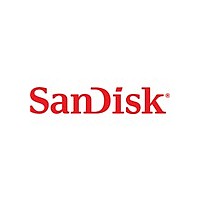SDMJ-32 SanDisk, SDMJ-32 Datasheet - Page 18

SDMJ-32
Manufacturer Part Number
SDMJ-32
Description
Manufacturer
SanDisk
Type
MultiMedia Cardr
Datasheet
1.SDMJ-32.pdf
(91 pages)
Specifications of SDMJ-32
Density
32MByte
Operating Supply Voltage (typ)
3.3V
Operating Temperature (min)
-25C
Operating Temperature (max)
85C
Package Type
MMC
Mounting
Socket
Pin Count
7
Operating Temperature Classification
Commercial
Operating Supply Voltage (min)
2.7V
Operating Supply Voltage (max)
3.6V
Programmable
Yes
Lead Free Status / RoHS Status
Compliant
Revision 1.3
© 2005 SanDisk Corporation
3.2.2
3.2.1
3.3
Hot Insertion and Removal
Power Protection
SPI Bus Topology
Hot insertion and removal are allowed; inserting or removing the card into or from the
MultiMediaCard bus will not damage the card. This also applies when the power is up.
Data transfer operations are protected by CRC codes; therefore, the bus master can detect
any bit changes induced by hot insertion and removal. The inserted card will be properly
reset when CLK carries a clock frequency (f
Cards can be inserted or removed to and from the bus without damage, however if one of
the supply pins (V
line to supply the card.
If the hot insertion feature is implemented in the host, the host must withstand a shortcut
between V
The MultiMediaCard/RS-MultiMediaCard SPI Interface is compatible with SPI hosts
available on the market. Similar to any other SPI device, the card’s SPI channel consists of
the following four signals:
•
•
•
•
Another SPI common characteristic implemented in the MultiMediaCard and RS-
MultiMediaCard are byte transfers. All data tokens are multiples of 8-bit bytes and always
byte-aligned to the CS signal. The SPI standard defines the physical link only and not the
complete data transfer protocol. In SPI Bus mode, the card uses a subset of the
MultiMediaCard Protocol and command set.
The card identification and addressing algorithms are replaced by the hardware CS signal.
There are no broadcast commands. A card (slave) is selected for every command by
asserting the CS signal (active low). Refer to Figure 3-2.
The CS signal must be continuously active for the duration of the SPI transaction
(command, response and data). The only exception is card-programming time. At this time
the host can de-assert the CS signal without affecting the programming process.
The bi-directional CMD and DAT lines are replaced by unidirectional dataIn and dataOut
signals. This eliminates the ability to execute commands while data is being read or written
which prevents sequential multi read/write operations.
supported by the SPI channel.
CS—Host-to-card Chip Select signal
CLK—Host-to-card Clock signal
DataIn—Host-to-card Data signal
DataOut—Card-to-host Data signal
DD
and V
DD
SS
or V
without damage.
SS
) is not connected properly, the current is drawn through a data
3-3
MultiMediaCard and RS-MultiMediaCard Product Manual
pp
).
Only single block read/write is
Chapter 3 –Interface Description
07/15/05












